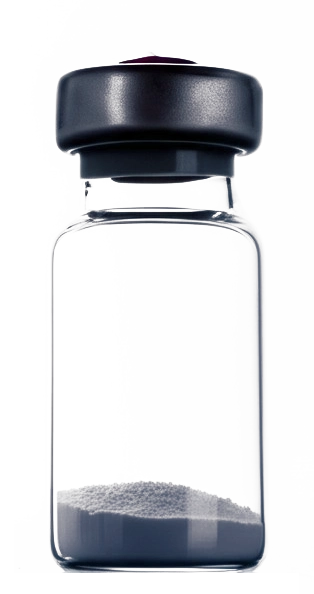
Therapeutic peptides are short chains of amino acids designed to mimic or enhance the bodys natural processes. In the context of autoimmune diseases, these peptides can be engineered to modulate the immune system, reduce inflammation, and prevent the body from attacking its own tissues. Their targeted action makes them promising candidates for treating conditions like rheumatoid arthritis, multiple sclerosis, and lupus.
Traditional treatments for autoimmune diseases often involve broad immunosuppressants, which can lead to significant side effects. Therapeutic peptides offer a more targeted approach, interacting with specific components of the immune system. This precision minimizes off-target effects, providing a potentially safer and more effective treatment option. As research advances, peptides for autoimmune diseases are becoming increasingly attractive due to their potential for personalized medicine.
Compared to conventional treatments like corticosteroids or biologics, peptides for immune modulation present several advantages. Corticosteroids can cause long-term side effects such as weight gain, bone loss, and increased risk of infection. Biologics, while targeted, can still suppress the immune system broadly, leaving patients vulnerable. Peptides, on the other hand, can be designed to fine-tune the immune response, promoting balance rather than suppression. This nuanced approach may lead to better long-term outcomes with fewer adverse effects.
The development of therapeutic peptides involves sophisticated design and screening processes. Scientists identify specific peptide sequences that can interact with target molecules involved in the autoimmune response. These peptides are then synthesized and tested for their efficacy and safety in preclinical studies. Once promising candidates are identified, they undergo clinical trials to evaluate their performance in human patients. This rigorous process ensures that only the most effective and safe peptides advance to clinical use.

Anti-inflammatory peptides work by interfering with the inflammatory pathways that drive autoimmune diseases. These peptides can bind to receptors on immune cells, blocking the release of inflammatory molecules like cytokines and chemokines. By dampening the inflammatory response, these peptides help to reduce tissue damage and alleviate symptoms associated with autoimmune conditions.
The design of anti-inflammatory peptides is highly specific, tailored to the unique characteristics of each autoimmune disease. Researchers analyze the inflammatory pathways involved in the disease and identify key targets for intervention. Peptides are then designed to bind to these targets with high affinity and specificity, ensuring that they selectively inhibit the inflammatory response without affecting other essential immune functions. This targeted approach minimizes the risk of off-target effects and maximizes therapeutic efficacy.
Yes, anti-inflammatory peptides can be used in combination with other therapies to enhance treatment outcomes. For example, they can be combined with traditional disease-modifying antirheumatic drugs (DMARDs) or biologics to provide a more comprehensive approach to managing autoimmune diseases. In some cases, combining peptides with other therapies may allow for lower doses of the conventional drugs, reducing the risk of side effects. The synergistic effect of these combined therapies can lead to improved disease control and better quality of life for patients.
Clinical trials have demonstrated the potential of anti-inflammatory peptides in treating various autoimmune diseases. For instance, certain peptides have shown promise in reducing joint inflammation and pain in patients with rheumatoid arthritis. Others have demonstrated efficacy in slowing the progression of multiple sclerosis by reducing the number of inflammatory lesions in the brain and spinal cord. These findings highlight the potential of anti-inflammatory peptides as a valuable tool in the treatment of autoimmune diseases.

Currently, peptides for medical treatment are being explored across a wide range of conditions beyond autoimmune diseases. They are used in cancer therapy to target tumor cells, in antimicrobial applications to combat infections, and in hormone replacement therapy to address hormonal imbalances. Additionally, peptides are being investigated for their potential in treating chronic pain, promoting tissue repair, and managing neurological disorders. The versatility of peptides makes them valuable assets in drug development.
The field of peptides for medical treatment is rapidly evolving, driven by advances in peptide synthesis, drug delivery technologies, and our understanding of molecular biology. Researchers are developing novel peptide-based drugs with improved stability, bioavailability, and targeting capabilities. Furthermore, new methods for identifying and designing therapeutic peptides are emerging, allowing for the rapid development of peptide-based therapies for a wide range of diseases. The future of peptides in drug development looks promising.
Despite their potential, developing effective peptides for autoimmune diseases faces several challenges. One major hurdle is ensuring that peptides can reach their target tissues in sufficient concentrations. The bodys natural enzymes can degrade peptides, reducing their bioavailability. Another challenge is the potential for peptides to elicit an immune response, leading to unwanted side effects. Overcoming these challenges requires careful design, formulation, and delivery strategies.
Looking ahead, the future of therapeutic peptides in autoimmune disease treatment is bright. Ongoing research is focused on developing more stable, targeted, and effective peptides. Advances in peptide engineering and drug delivery technologies are paving the way for personalized peptide-based therapies tailored to the specific needs of individual patients. As our understanding of the immune system deepens, the potential of therapeutic peptides to revolutionize the treatment of autoimmune diseases will only continue to grow.
Here are quick answers to the questions raised in this article:

